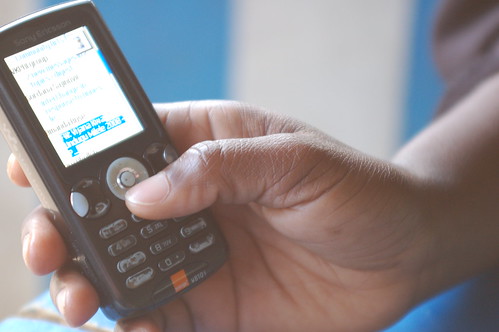When I started to look at the whole Bring our Own Device phenomenon, I thought it was all pretty simple. Mal Lee and EdFutures have drawn a distinction between BYOD (Bring Your Own Device) and BYOT (Bring our Own Technology). These are helpful, but unfortunately things ain’t that simple.
According to EdFutures,
Bring Your Own Device (BYOD) refers learners being able bring any mobile computing device in to school and connect it to the school network, so long as they have registered the device in advance with the school. This usually involves registering the MAC address of the device with the school. The school restricts access to the network and manages which facilities the pupil/device can utilise.
(EDFutures), and
Bring Your Own Technology (BYOT) refers to learners being able to bring any mobile computing device in to school and connect it to the school network, without having to register the device in advance. In practice this usually involves connecting the device to the internet via the school wifi connection.
According to Mal Lee, in his article The BYOT-BYOD difference,
Bring your own technology (BYOT) is an educational development and a supplementary school technology resourcing model, where the home and the school collaborate in arranging for students’ 24/7/365 use of their own digital technology/ies to be extended into the classroom, and in so doing to assist their teaching and learning and the organisation of their schooling and, where relevant, the complementary education outside the classroom.
 Photo by Erik (HASH) Hersman http://www.flickr.com/photos/whiteafrican/I explored the potential importance and possibilities associated with being able to use your own device, with your own apps, in a non-locked-down environment in an article called Bring Your Own Thinking. So, my idealistic self prefers Mal Lee’s idea of BYOD/BYOT than EdFutures’, although my research so far convinces me that the latter is probably a more realistic possibility in England at the present time.
Photo by Erik (HASH) Hersman http://www.flickr.com/photos/whiteafrican/I explored the potential importance and possibilities associated with being able to use your own device, with your own apps, in a non-locked-down environment in an article called Bring Your Own Thinking. So, my idealistic self prefers Mal Lee’s idea of BYOD/BYOT than EdFutures’, although my research so far convinces me that the latter is probably a more realistic possibility in England at the present time.
But the main difficulties arise, I think, when people use the same term to mean completely different things. Ask a school if they have a BYOD approach and they may answer “No”, or they may answer “Yes”. The “No” is pretty easy to understand. But when they say “Yes” then you need to ascertain exactly what they mean by that. I have found the term BYOD to mean, in other people’s minds, any of the following (and, believe it or not, this list is not exhaustive):
- Bring Your Own Device, as long as it has an Apple operating system.
- Bring Your Own Device, as long as it does not have an Apple operating system.
- Bring Your Own Device, as long as it comes from a list of approved devices.
- Bring Your Own Device, as long as it comes from a list of approved types of device.
- Bring Your Own Device, as long as it is the iPad we supplied you with.
- Bring Your Own Device, as long as it does not include a mobile phone.
- Bring Your Own Device, as long as it is an iPad or iPod Touch or X, where X is the deice we specify.
Each of these is valid in terms of a school’s own vision and ethos and so on, so I am not listing these by way of making or implying any value judgement. However, I can’t help thinking that George Bernard Shaw’s observation, that “England and America are two countries separated by a common language”, sort of applies here. Two people can be having a discussion about BYOD or BYOT, and each be talking about two completely different things!

